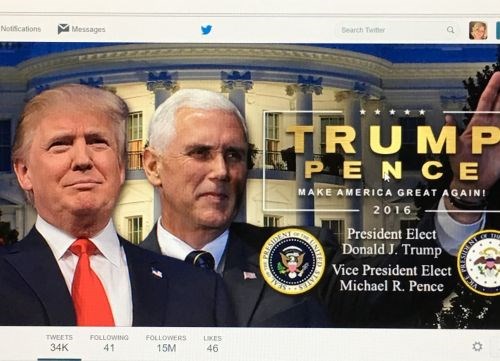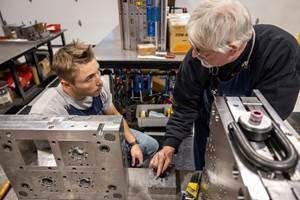President-Elect Trump… Now What?
Donald Trump won the election. The people have spoken, and soon he will be inaugurated as the 45th President of the United States. Now what?

After a remarkable election, how will President-Elect Donald J. Trump make America great again?
It’s just about a week after our national election and from speaking with many a friend, family member and colleague, I know I’m not alone in thinking, wow, Donald Trump won! The people have spoken, and soon he will be inaugurated as the 45th President of the United States. Now what?
Harry Moser has a few ideas. The president of the Reshoring Initiative issued a press release last week that said, “The country has a unique opportunity to address a broad range of economic and social issues.”
I agree, and like Harry I’m looking for Trump to keep a few of his campaign promises regarding trade and taxes. “Candidate Trump focused on seemingly uncomplicated actions such as imposing 35 to 45 percent tariffs on Mexican and Chinese goods, renegotiating trade agreements such as NAFTA and cutting the corporate tax rate to 15 percent,” he says. These are important actions and there are many of us who have longed to hear a presidential candidate make manufacturing a priority for many years—while we watched jobs leave the country by the millions and our economy tank, not to mention seeing many mold manufacturers go out of business.
Now I don’t know how uncomplicated it will be for Trump to slap tariffs on imported Mexican and Chinese goods or renegotiate NAFTA, but I do know that because of this year’s election results, Republicans will control the majority in both the House and the Senate for the next two years, which means he has an edge for successfully making his promises a reality. And with a much-needed tax cut for businesses it should result in making U.S. manufacturing much more competitive. So, I asked Mr. Moser how many jobs he thought we would see return to the U.S. if we do make our country more competitive.
“We should be able to, and will ultimately have to, be like the average of all other nations and have a zero trade deficit instead of our persistent $500 billion/year trade deficit. Eliminating that trade deficit would bring back approximately four million manufacturing jobs, and as many as 12 million total jobs including the indirect jobs created,” he told me, adding that “the great success of reshoring and Foreign Direct Investment bringing back about 260,000 jobs in the last six years are proof that millions can be brought back when we are competitive.”
Asked what economic changes will be most effective in bringing those jobs back, Moser replied, “We need to improve our price and Total Cost of Ownership competitiveness by about 20% to be competitive in our home market. President Trump will need to utilize a broader portfolio of actions, especially those that are proven and can be unilaterally implemented by the U.S. and passed by Congress. Our recommendations are outlined below in approximate priority order.
- Strengthen our skilled workforce by shifting some “education” resources to training 100,000s more toolmakers, precision machinists, welders and similar professionals. (The German, Swiss, Austrian model)
- Lower the USD by about 25%. By being the safe haven for financial investments the USD has reached the point where U.S. manufacturing is not competitive. (The Chinese, Japanese, German model). John Hansen PhD, previously a World Bank economist, has proposed a Market Access Charge system that would eliminate the overvaluation of the USD.
- Replace other taxes with a 15% VAT (Value Added Tax). A VAT subsidizes exports and taxes imports. (The world model[i] except the U.S.)
- Lower the corporate tax rate (Federal plus state) to about 23%, eliminating all special deals. (The world model[ii] except the U.S.)
“Any two of the first three items (above) plus the fourth would be sufficient. Or do 50% of all four,” he concluded.
If Trump and his new cabinet were to follow some of this advice it would still take 10 to 20 years to bring back four million manufacturing jobs due to the need to build the skilled workforce, develop supply chains and change corporate practices or behavior, Moser says. That’s something that I companies can and will do. I’ve featured and blogged about companies who have amazing programs in place for attracting more, skilled workers into this industry. In fact, you’ll see an article about some unique programs offered by U.S. educational institutions, too, in the January issue of MMT.
In the meantime, what do you think Trump and his cabinet need to do to help America’s economy and manufacturing base thrive again? Let me know!
[i] uscib.org/valueadded-taxes-vat-ud-1676/
[ii] taxfoundation.org/article/corporate-income-tax-rates-around-world-2015
Related Content
The Role of Social Media in Manufacturing
Charles Daniels CFO of Wepco Plastics shares insights on the role of social media in manufacturing, how to improve the “business” side of a small mold shop and continually developing culture.
Read MoreHow to Foster Innovation Through a Culture of Education, Mentoring
Dynamic Tool Corp. shares its strategy for building a team with the right attitude and aptitude to deliver innovation that meets customer expectations.
Read MoreUnique Mold Design Apprenticeship Using Untapped Resources
To help fill his mold design skills gap, Jeff Mertz of Anova Innovations, is focused on high schools and underprivileged school districts, a school that has lower graduation and college entrance rates. The goal is a student-run enterprise.
Read MoreEden Tool and Eden Manufacturing: A Story of Resilience, Growth and Innovation
This critical parts manufacturer, founded on solid tooling fundamentals, didn’t get derailed with the unexpected passing of the owner because leadership was already building a solid business, not just a good tool shop. Here’s how they managed change incrementally… and they’re not finished yet.
Read MoreRead Next
How to Use Strategic Planning Tools, Data to Manage the Human Side of Business
Q&A with Marion Wells, MMT EAB member and founder of Human Asset Management.
Read MoreReasons to Use Fiber Lasers for Mold Cleaning
Fiber lasers offer a simplicity, speed, control and portability, minimizing mold cleaning risks.
Read MoreAre You a Moldmaker Considering 3D Printing? Consider the 3D Printing Workshop at NPE2024
Presentations will cover 3D printing for mold tooling, material innovation, product development, bridge production and full-scale, high-volume additive manufacturing.
Read More





















